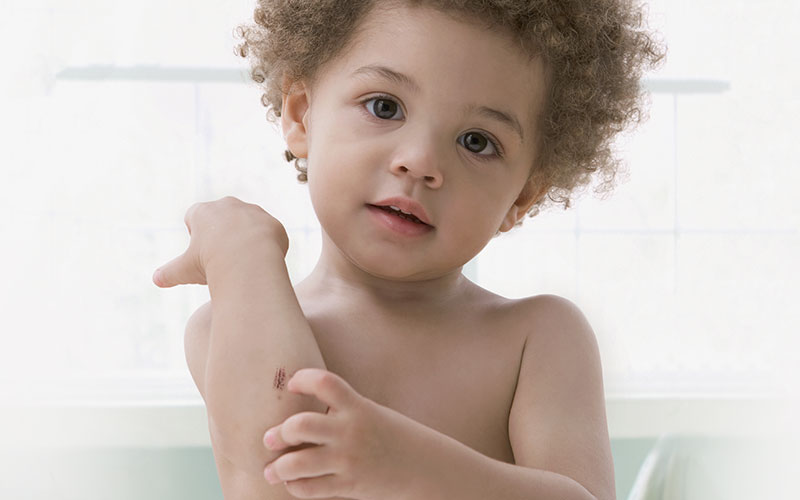Do You Have A Question About Kelo-cote®?
Find out the answers to the most commonly asked questions about KELO-COTE®

Any parent will want to help their child to grow up happy and free from worries about scarring. Children’s scars are similar to adults’ scars in many ways however, certain types of scars such as those caused by burns may be worse on children.1 Research suggests this may be due to differences in their immune system.2
There is a good chance that most childhood scars will fade but depending on the location of the scar, they may shrink or get bigger as the child grows. To minimise the impact of scarring it is important to make sure that you follow a number of steps to give your child’s wound the best chance to heal.
Depending on where the wound is on your child’s body, you can leave the original dressing in place for around five to seven days. Seek advice from a healthcare professional about when to remove it.
Before you remove the dressing, wash your hands with soap and water and then carefully take off the dressing. Try not to touch the healing wound with your fingers. You may be given a replacement dressing to use at home. Apply the dressing carefully and don’t touch the inside of it.3
Over the past 20 years, studies have generated much evidence to show that a moist wound environment is essential for wound healing.4
Covering up a wound with a moist wound healing product provides an optimal wound climate which will enable most favourable conditions for wound closure (epithelisation), the formation of new tissue and the immune system. It will also let the healing process remain undisturbed to ensure faster healing and prevent scab formation to optimize cell migration and reduce the likelihood of scarring.
UV exposure has been shown to influence the wound healing process by causing immediate UV-induced inflammation, followed by increased skin pigmentation, which may result in long term pigmentation of a fresh or recent scar. It is therefore very important that scars are protected from the sun5. The NHS recommends that complete sunblock is used for at least two years.
1 https://baaps.org.uk/patients/procedures/16/scars_and_keloids (Accessed January 2018)
2 https://www.magonlinelibrary.com/doi/abs/10.12968/jowc.2017.26.5.256 (Accessed January 2018)
3 https://www.bupa.co.uk/health-information/directory/s/surgical-wounds (Accessed January 2018)
4 NICE (March 2016) Chronic wounds: advanced wound dressings and antimicrobial dressings. Evidence summary ESMPB2.
5 North Bristol NHS Trust – www.nbt.nhs.uk/sites/default/files/attachments/Scar%20management_NBT002418.pdf (Accessed October 2017)